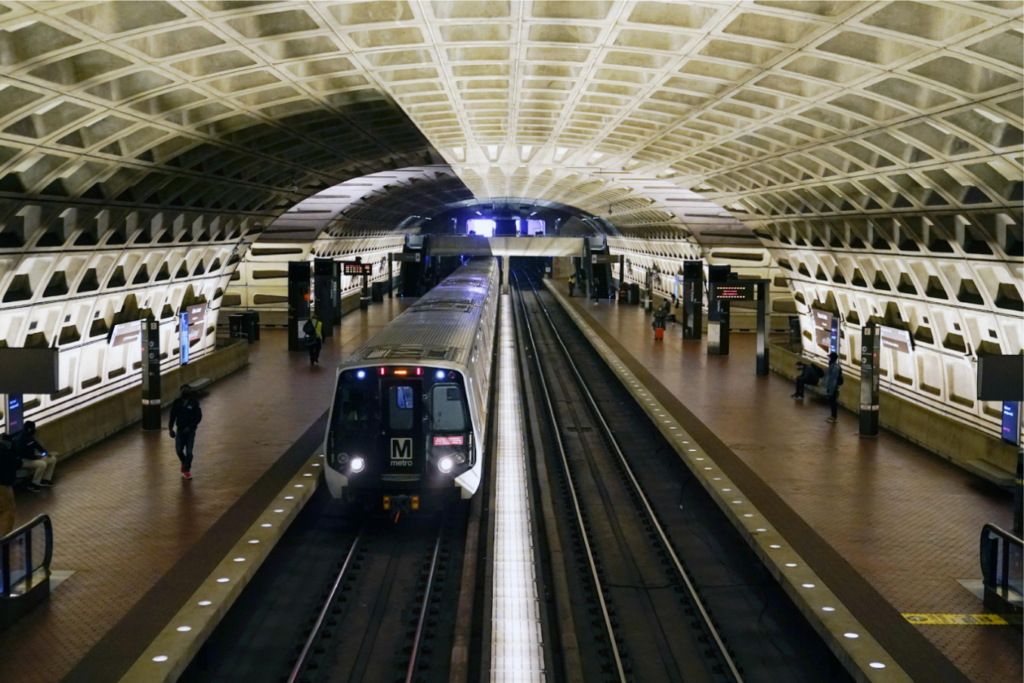The New Updates on the Metro

Image Courtesy of AP News
By Zachary Lichter
On Sunday, September 11, 2022, the Washington Metropolitan Area Transit Authority (WMATA) changed the names of five Metro stations. These names come as local jurisdictions in Maryland and Virginia request that the stations should be named based on where they are located. WMATA will gradually update its maps once some new stations on the Silver Line, including the Potomac Yard Station, open up for passenger service. Customers will also see instant changes on digital maps at rail stations, bus stops, and online. Here are the following name changes to the five stations:
- White Flint will become North Bethesda
- Largo Town Center will become Downtown Largo
- Tysons Corner will become Tysons
- Prince George’s Plaza will become Hyattsville Crossing
- The secondary name of West Falls Church will change from VT/UVA to VT only
Physical signs at White Flint and Largo Town Center have already changed. WMATA is working with each jurisdiction to coordinate the name change rollouts to minimize customer confusion.
Along with the names of stations being changed, heavy construction has already been put into effect as of Summer 2022 for the brand-new Purple Line after two years of no construction due to a work shortage. Two hundred fifty workers have been signed to work on the brand-new Purple Line. The Maryland Department of Transportation (MDOT) estimates a cost of $3.4 billion for this project due to the rise in labor costs and supply chain issues. The previous cost for this project was estimated at $2 billion. When the Purple Line is completed, it will cover sixteen point two miles with twenty-one stations from the Bethesda Metro Station to the New Carrolton Metro station. The Purple Line is expected to be completed by Fall 2026.
As of Monday, September 12, 2022, the Metro has returned more of its newer models from the 7000 series fleet after a subway car from that particular model derailed in Virginia. On October 12, 2021, a train on the Blue Line derailed three times. The third derailment was just south of Rosslyn Station in Arlington, Virginia. The train that day held 187 passengers, whom all evacuated safely. The following Monday, WMATA pulled 748 subway cars in the 7000 series fleet, making people resort to taking the bus, working from home, or waiting at train stations to ride an overcrowded and potentially dangerous train. With the 7000 series fleet returning on the tracks, the wait times will decrease, which is all part of WMATA’s plan to improve customer train frequency.
Currently, the Metro operates twenty of its 7000 series trains per day, up to the current limit of eight trains. WMATA is working to develop drive-thru technology on the tracks which would be able to stream real-time data about all subway cars. Any subway car with a change in its wheel measurement will be removed from the fleet. The newest subway cars on the Metro are built safer than the older models. The new and improved 7000 series fleet will meet the industry’s design expectations for crashworthiness, an interior design feature that prevents injuries, and cameras installed for added security. The new 7000 series are nearly four times less likely to become disabled than the older cars, which will help reduce evacuation risk. The newer models will help reduce the risk of passengers’ risk of slipping, tripping, and falling, which are the most common causes of passenger injuries on rail transportation. After a year of reduced service, the Metro is looking to get back to normal operations.







Clear, concise, and informative. Thank you, Zach.